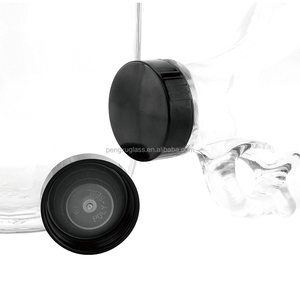Understanding Bottle Wine Sizes
When it comes to wine, the bottle size can influence more than just presentation; it also affects aging potential, aeration, and even the flavor profile. Understanding the various bottle wine sizes is essential for enthusiasts and collectors alike. This guide will explore the different types, applications, features, and advantages of the various wine bottle sizes, giving you comprehensive insight into this fascinating aspect of the beverage world.
Types of Bottle Wine Sizes
Wine bottles come in a variety of sizes, each with its unique characteristics and purposes. Here are some of the most commonly used bottle wine sizes:
- Standard bottle (750ml) - The most common size, suitable for almost all types of wine.
- Magnum (1.5L) - Equivalent to two standard bottles, ideal for aging and celebrations.
- Jeroboam (3L) - Often used for sparkling wines; equivalent to four standard bottles.
- Rehoboam (4.5L) - Primarily for sparkling wines, perfect for large gatherings.
- Mathusalem (6L) - This oversized bottle holds eight standard bottles and is great for aging red wines.
- Balthazar (12L) - Equivalent to sixteen standard bottles, often used for special occasions.
- Nebuchadnezzar (15L) - The largest standard size; equivalent to twenty standard bottles and a stunning centerpiece for any celebration.
Applications of Different Bottle Wine Sizes
Each bottle wine size serves a specific purpose that can cater to various occasions, whether it's a casual dinner or a grand event. Here are some common applications:
- Standard Bottles: Ideal for everyday consumption and personal collections in moderate sizes.
- Magnums: Perfect for large dinners and events where you want to impress guests with quality wine and quantity.
- Jeroboams and Rehoboams: Excellent choices for parties and occasions since they minimize the need for frequent bottle opening.
- Mathusalem and larger sizes: Often seen in specialty restaurants and high-end events, serving as statement pieces.
Advantages of Various Bottle Wine Sizes
Each size comes with its own set of advantages that can enhance your wine-drinking experience. Here's why understanding bottle wine sizes can be beneficial:
- Aging Potential: Larger bottles allow for slower aging due to the reduced surface area compared to the volume of wine, leading to more complex flavors.
- Celebratory Appeal: Large bottles serve as stunning visual statements—perfect for weddings or milestone celebrations.
- Reduced Oxidation: The larger the bottle, the less surface area in contact with air—resulting in slower oxidation and preservation of quality.
- Convenience: Fewer entries into a bottle means less risk of spoilage, making larger wines practical for events and gatherings.
Understanding and Choosing the Right Bottle Wine Size
Choosing the right bottle wine size can significantly impact your wine experience. Here are some tips to consider:
- Occasion: Consider whether you’re hosting a small gathering or a large celebration; select sizes that fit the occasion.
- Wine Type: Different wines can benefit from different sizes; consult with a sommelier if you're uncertain.
- Storage: Ensure you have adequate storage for larger bottles, as they can be cumbersome.
- Budget: Larger bottles often come with a higher price tag; plan your budget accordingly.









































